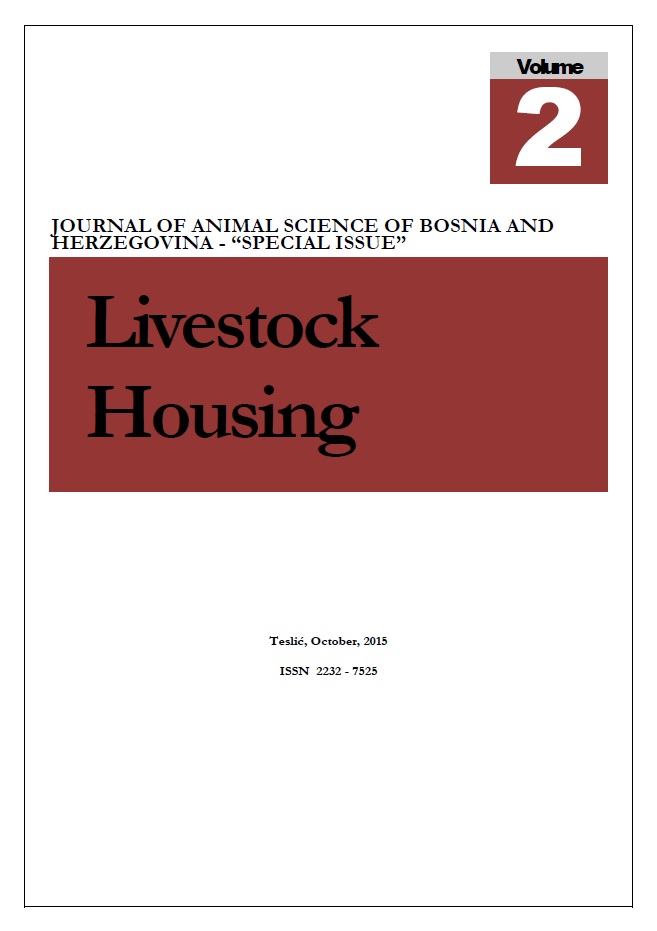EFFECT OF CERTAIN BARN CONSTRUCTION CHARACTERISTICS ON INDOOR CLIMATE STATUS IN DAIRY BARNS IN BOSNIA AND HEREGOVINA
DOI:
https://doi.org/10.7251/JAS1502031EAbstract
The aim of this field study was to describe climatic status in dairy barns in lowland and in mountainous regions of BiH, and to examine correlations between chosen housing parameters and indoor climate. Totally 76 herds were visited once by a team of trained observers in 18 municipalities in Bosnia and Herzegovina. All barns in mountain region had tie-stall housing system (MH), while 30 barns in lowland regions had tie-stall system (LTS) and 8 of those loose housing (LLH) with or without cubicles. Presence of CO2 was quite different between groups, the average lowest was found in LLH and it was 627.5 ppm (ranging from 390 – 890), in LTS 936.7 (390-1690), in MH 1105.7 (390-5390). The highest measures roof temperatures were at LTS, and the average was 12.7, while in LLH were 10.49, MH 11.14 and AF 11.70. Mean floor area per animal for all farms was 6 m2/animal, in MH 6.4, LTS 5.4 and LLH 6 m2/animal. Mean barn volume for all farms was 27.9 m3/animal, in MH 25.5, LTS 26.5 and LLH 44.2 m3/animal. Average barn height was 3.6 m for AF, 5.7 m for LLH, 4 m for LTS and 2.8 meters for MH. The negative correlations between construction environment parameters was found for all combinations except for the air velocity in LTS barns. Some of the construction parameters could help in overall estimation of the housing quality in dairy cattle barns.Downloads
Published
2019-04-08
Issue
Section
Чланци

